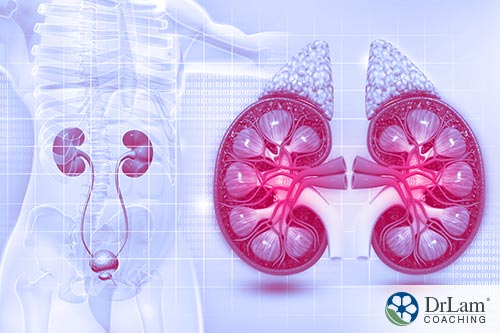 Depression, one of the most common mental health conditions in the 15 to 44 age group in USA, is also one of the most difficult to remediate. Medication and psychotherapy make up the first line of remediation efforts, but many people still remain depressed with these efforts. Almost two-thirds of people suffering from depression do not get relief with the first medication they take. In addition, each medication tried after the first seems to work less effectively. A promising new approach to remediation of this kind of chronic depression is transcranial magnetic stimulation. This therapy appears effective in up to 50% of these cases.
Depression, one of the most common mental health conditions in the 15 to 44 age group in USA, is also one of the most difficult to remediate. Medication and psychotherapy make up the first line of remediation efforts, but many people still remain depressed with these efforts. Almost two-thirds of people suffering from depression do not get relief with the first medication they take. In addition, each medication tried after the first seems to work less effectively. A promising new approach to remediation of this kind of chronic depression is transcranial magnetic stimulation. This therapy appears effective in up to 50% of these cases.
For quite some time electroconvulsive therapy (ECT) worked well on those depressions that proved resistant to medications. It continues in use regularly. However, people often can not tolerate the side effects that involve memory and cognition. Therefore, another form of remediation for this category of depression came under development. Transcranial magnetic stimulation gained Food and Drug Administration (FDA) approval for use in cases of treatment-resistant depression and obsessive-compulsive disorder (OCD).
A non-invasive procedure, transcranial magnetic stimulation (TMS) utilizes a magnetic pulse to stimulate nerve cells in your brain in an effort to deal with depression. And because of its use of repeated magnetic pulses, the term repetitive transcranial magnetic stimulation (rTMS) also describes the procedure.
During a session using rTMS, a trained healthcare provider places a magnetic coil against your scalp in a specifically determined area around your forehead. It delivers a painless magnetic pulse to stimulate nerve cells in the area of your brain that helps regulate depression and mood control.
Scientists do not completely understand the biology behind transcranial magnetic stimulation. But it appears to impact how the regions of the brain that have decreased activity in depression work. Research determined that one of these regions, the dorsolateral prefrontal cortex, makes up the area most involved in depression. Likewise, it appears targeting this area brings the most clinical effectiveness from transcranial magnetic stimulation.
In addition to the correct placement for this procedure, the frequency of the pulse delivery affects the outcome. Recent research shows this frequency can either increase or decrease brain activity depending on changes in the frequency. In addition, some studies also show stimulation of the right or left side of the brain can elicit opposite effects on mood.
The noninvasive form of transcranial magnetic stimulation does not require surgery or implantation of electrodes. Therefore, it does not require you to bring someone with you to the procedure to drive you home. Likewise, it does not require sedation as ECT does.
In general, TMS is considered a safe and well-tolerated procedure. However, some side effects may result.
Overall, the side effects fall in the mild to moderate range and tend to improve soon after a session. In addition, they may become less noticeable over the series of treatments. For example, the following side effects may present following the procedure.
Your healthcare professional may adjust the amount of stimulation or recommend an over-the-counter pain medication prior to the procedure.
Further, some rare serious side effects may include:
 Currently, the Food and Drug Administration (FDA) approves TMS only for major depressive disorder and obsessive-compulsive disorder. A large number of scientific studies continue across the country, assessing its effectiveness in other disorders. For instance, ongoing research evaluates transcranial magnetic stimulation as an intervention for:
Currently, the Food and Drug Administration (FDA) approves TMS only for major depressive disorder and obsessive-compulsive disorder. A large number of scientific studies continue across the country, assessing its effectiveness in other disorders. For instance, ongoing research evaluates transcranial magnetic stimulation as an intervention for:
As with most procedures, some people should not try TMS. One of the major categories of people who should avoid the procedure involves those with metal implants or medical devices. With some of these devices and implants, the procedure can still be carried out. However, because this procedure produces strong magnetic currents, if your body carries any of the following devices, you should avoid the procedure.
You should inform your healthcare professional who conducts this procedure if you:
Before the actual treatment session begins, your healthcare professional will determine the best placement of the magnetic coil and the best dosage for you. This typically involves you going to a treatment room, sitting in a chair, and wearing earplugs during the session.
Your first session will usually last about an hour. And the following sessions will last from 20-30 minutes each.
In this first session, a magnetic coil placed against your head in the area of your forehead will pulsate by being switched on and off repeatedly. You will hear tapping or clicking which can sound very loud and leads to the reason for earplugs. You may also feel a tapping on your scalp. This part of the process is called mapping.
 During this part of the procedure, a landmark in your brain, the motor cortex, will provide the first target. This will determine the best location for the stimulation coil according to your brain structure. Likewise, it will help determine the most appropriate strength of the magnetic energy. With calculations based on this landmark, the healthcare professional will locate the dorsolateral prefrontal cortex.
During this part of the procedure, a landmark in your brain, the motor cortex, will provide the first target. This will determine the best location for the stimulation coil according to your brain structure. Likewise, it will help determine the most appropriate strength of the magnetic energy. With calculations based on this landmark, the healthcare professional will locate the dorsolateral prefrontal cortex.
Your healthcare professional will ascertain the appropriate strength of the magnetic energy for you by increasing this energy until your fingers or hands twitch. This reference point, called the motor threshold, will determine the correct dosage of energy for you.
Throughout the sessions, the amount of stimulation can change depending on your side effects and symptoms.
One session of transcranial magnetic stimulation may bring some changes in your brain’s level of excitability. However, typically you won’t experience relief until possibly as long as the sixth week of sessions.
Subsequently, as soon as your healthcare professional determines the correct location and energy dosage, your sessions can begin.
Just as during the first session, you will sit in a comfortable chair wearing earplugs and the magnetic coil will go into position. And you will hear the clicking or tapping sounds. During the entire 20-minute procedure you will remain awake and alert. Further, you may feel some scalp discomfort during and for a short time after the session.
After that, you can resume normal activities including driving and working.
If transcranial magnetic stimulation works for you, it may resolve your depression completely. However, you will most likely require sessions five days a week for six weeks or longer. And once you complete this series of sessions the standard protocol of medication and psychotherapy will likely need to continue as ongoing treatment. However, at this point scientists and health professionals do not know whether this ongoing treatment might prevent a recurrence of symptoms.
If you do experience this recurrence, you can undergo transcranial magnetic stimulation again. Some insurance companies may cover this re-induction.
Up to 50% of the people suffering from major depression and not responding to conventional treatment who then undergo TMS gain significant relief. This effectiveness may increase as researchers gain more knowledge about techniques, dosage levels, and areas of the brain to target.
 AFS is a condition resulting from overwhelming stress that places a terrible burden on your adrenal glands. The adrenal glands, your first-line defence against the effects of stress, release cortisol and other hormones when stress occurs. And the increased risk of chronic stress in our culture makes AFS a greater challenge. When stress becomes so great that the adrenals can’t supply sufficient cortisol, AFS results.
AFS is a condition resulting from overwhelming stress that places a terrible burden on your adrenal glands. The adrenal glands, your first-line defence against the effects of stress, release cortisol and other hormones when stress occurs. And the increased risk of chronic stress in our culture makes AFS a greater challenge. When stress becomes so great that the adrenals can’t supply sufficient cortisol, AFS results.
Another mechanism, the NeuroEndoMetabolic (NEM) stress response become activated when your adrenals become fatigued. The NEM consists of six interconnected circuits made up of three organs and systems each. What happens to one of these circuits affects the others.
TMS may prove beneficial for those who suffer from AFS because depression and anxiety both result when the neuroaffect circuit of the NEM becomes dysfunctional. In addition, the effects of high levels of cortisol and other stress hormones can seriously affect your brain’s functioning. Higher than normal levels of these stress hormones, such as can occur when stress becomes severe and chronic, particularly affects the brain areas involved in regulating emotional responses and cognitive abilities. TMS targets these same brain areas.
With current research into the effects of TMS on the gut related to weight loss, the potential for positive changes in gut bacteria points to another way transcranial magnetic stimulation may benefit people with AFS and dysfunction in the NEM.
While the FDA approved TMS for remediation of major depressive disorder and obsessive-compulsive disorder, other conditions currently receive a lot of research attention. Large clinical trials involving several conditions evaluate the effectiveness of TMS. The FDA does not currently approve the use of TMS for these conditions. Therefore, its use for them remains ‘off-label’.
The following conditions currently receive research attention concerning the use of transcranial magnetic stimulation as a remediation approach.
A small, single-blinded, placebo-controlled, crossover study consisting of sixteen subjects suffering from Tourette’s syndrome showed no significant improvement in symptoms among the subjects.
With the prevalence of PTSD due to wounded soldiers, a non-invasive procedure such as transcranial magnetic stimulation would provide much-needed relief. Studies found improvement in what some consider the core symptoms of PTSD: avoidance, anxiety, and somatization. This study used the Clinical Global Impression Scale to measure general clinical improvement. Subjects showed this overall improvement. However, the results only lasted a short time. Likewise, researchers found improvements in anxiety, sleeplessness, and hostility. But overall, the study found only minimal improvement for PTSD. On the other hand, the study did find TMS of the right dorsolateral prefrontal cortex at a frequency of 10Hz to bring more relief than slow frequency or sham stimulation.
People who suffer from schizophrenia experience both positive and negative symptoms. Positive symptoms typically include hallucinations, depression, and delusions. On the other hand, the negative symptoms describe characteristics that essentially take something away from the person. For example, most people with schizophrenia experience a dramatic lack of motivation.
Research shows high-frequency rTMS brought on a significant reduction in negative symptoms with nonsignificant improvement in depression. On the other hand, this same high-frequency rTMS brought on an increase in positive symptoms. Other research showed significant improvement in hallucinations with transcranial magnetic stimulation compared to sham TMS. In addition, still, further research showed a decrease in the frequency of auditory hallucinations with TMS. In addition, the subjects experienced a significant decrease in negative symptoms along with an improvement in function.
Compared to research in other conditions, research into the use of TMS in dealing with autism symptoms remains well behind. For example, a review of the literature on this topic showed a small number of studies. And many of these fell into the categories of theoretical, review articles, or single session studies. Only a few of these met the standard of clinical trials. And only one included the comparison of TMS to a placebo.
 Some of the clinical studies suggested use of transcranial magnetic stimulation could help relieve some symptoms of autism. For example, they indicated TMS can relieve repetitive behaviors and irritability. In addition, improvement in eye-hand coordination and social skills also occurred.
Some of the clinical studies suggested use of transcranial magnetic stimulation could help relieve some symptoms of autism. For example, they indicated TMS can relieve repetitive behaviors and irritability. In addition, improvement in eye-hand coordination and social skills also occurred.
Significant limitations of this research included the small number of subjects in each study. In addition, some of the studies only included adult men with autism spectrum disorder but without intellectual deficits or epilepsy which often occurs along with autism.
The most frequent cause of widespread pain, fibromyalgia affects up to 12 million people in the U.S. In addition to chronic pain, fibromyalgia also brings sleeplessness, fatigue, digestive disorders, depression, dizziness, numbness, tingling, headache, and frequent urination.
French researchers reported the use of TMS brought relief from some symptoms of fibromyalgia. An increase in metabolism in the brain appeared to lie at the root of this improvement. Such a finding supported the idea that fibromyalgia comes from a physical cause that included changes in areas of the brain. TMS appeared to bring positive changes in those same areas. These changes appear to occur in the areas of the brain involved in the experience of pain and emotion.
Ongoing studies show initial potential for TMS in helping people stop smoking. One study involving heavy smokers showed some of them stopped smoking for as long as six months. Another study utilized high-frequency TMS over ten days on the left side of the brain. As a result of this effort, consumption of cigarettes decreased. However, after treatment stopped, this finding disappeared.
Other research suggested deep brain stimulation in the insula may stimulate this area of the brain implicated in addictive behaviors. This treatment approach is not approved by the FDA.
Not a great deal of research into the use of TMS for alleviating anxiety exists. Since so many people who deal with depression also must deal with anxiety, this lack assumes greater significance. And the research conducted so far suggests mostly that the efficacy for this use remains unknown.
A small study conducted in 2013 evaluated the efficacy of TMS in dealing with the combination of depression and anxiety. The results suggested the use of TMS with this population showed significant improvement in both depression and anxiety. However, the small size of the sample limited the impact of the findings. In general, it appears that TMS may hold promise as an intervention with this population.
Much of the existing research findings appear contradictory. Some findings show that transcranial magnetic stimulation may alleviate anxiety when it presents along with depression. Other research indicates that when TMS does alleviate anxiety, the effect is short-lived. On the other hand, animal research shows an increase in anxiety when researchers used TMS as an intervention.
Some of the research into TMS as a way to treat anxiety explored the biological basis for anxiety and its effects on TMS. For example, some scientists hypothesize that the basis for generalized anxiety lies in hyperarousal in certain brain centers. This suggests the polar opposite of what happens in depression.
One result of this hypothesis involves a possible imbalance of hemispherical activity in the brain. People who suffer from anxiety appear to have overactive right hemispheres. Some researchers believe using low-frequency TMS on the right medial prefrontal cortex and high-frequency TMS on the left medial prefrontal cortex may alleviate this imbalance and thus alleviate some types of anxiety.
Still other researchers point to the fact that transcranial magnetic stimulation only penetrates about 2.5 centimeters into the brain’s cortex. They suggest deeper penetration may prove necessary for anxiety relief.
Italian research findings indicate TMS may lead to beneficial changes in the gut bacteria and thus to the potential for weight loss. The composition of the gut bacteria influences the risk of obesity as well as the risk of developing depression. This latter finding refers to the gut-brain connection and its importance in developing depression.
In this research, the subjects in the treatment group experienced a significant weight loss, lower levels of norepinephrine, lower levels of blood glucose, and lower insulin levels. In addition, the amount of ‘good’ bacteria in their gut increased while ‘bad’ bacteria decreased.
However, the researchers cautioned that the mechanism behind these findings remains unknown.
Often considered the most frequently cited cause of disability in the U.S., depression can prove hard to treat. Transcranial magnetic stimulation may provide a new approach to dealing with treatment-resistant depression.
This procedure is a non-invasive method of using a magnetic field to stimulate the activity of certain areas of the brain affected by depression. Research and clinical observation indicate it brings benefit to about half of the people for whom the typical medication and psychotherapy regimen does not work.
Researchers continue to explore other potential uses for TMS, also. For example, trials with TMS as an intervention take place with autism, anxiety, smoking cessation, fibromyalgia, and other conditions. Thus far, the FDA only approves TMS for dealing with depression.
If you are suffering from depression, here are a few things you can do to alleviate the situation:
 Make sure you have given standard treatments a fair trial.
Make sure you have given standard treatments a fair trial.Whatever course of action you decide to take, however, please do so with the guidance of your healthcare professional who can help you look at all options and choose the one that will benefit you most.
If you have questions regarding depression or any symptoms, you can contact the Dr. Lam Coaching team. We can offer you a free** no-obligation phone consultation at +1-626-571-1234. You can also send us a question through our Ask The Doctor system by clicking here.
Transcranial magnetic stimulation is a noninvasive procedure in which a magnetic coil is positioned to stimulate nerve cells in the prefrontal cortex. The magnetic energy works to increase the activity of the nerve cells that are not active enough in depression. It appears to work effectively.
